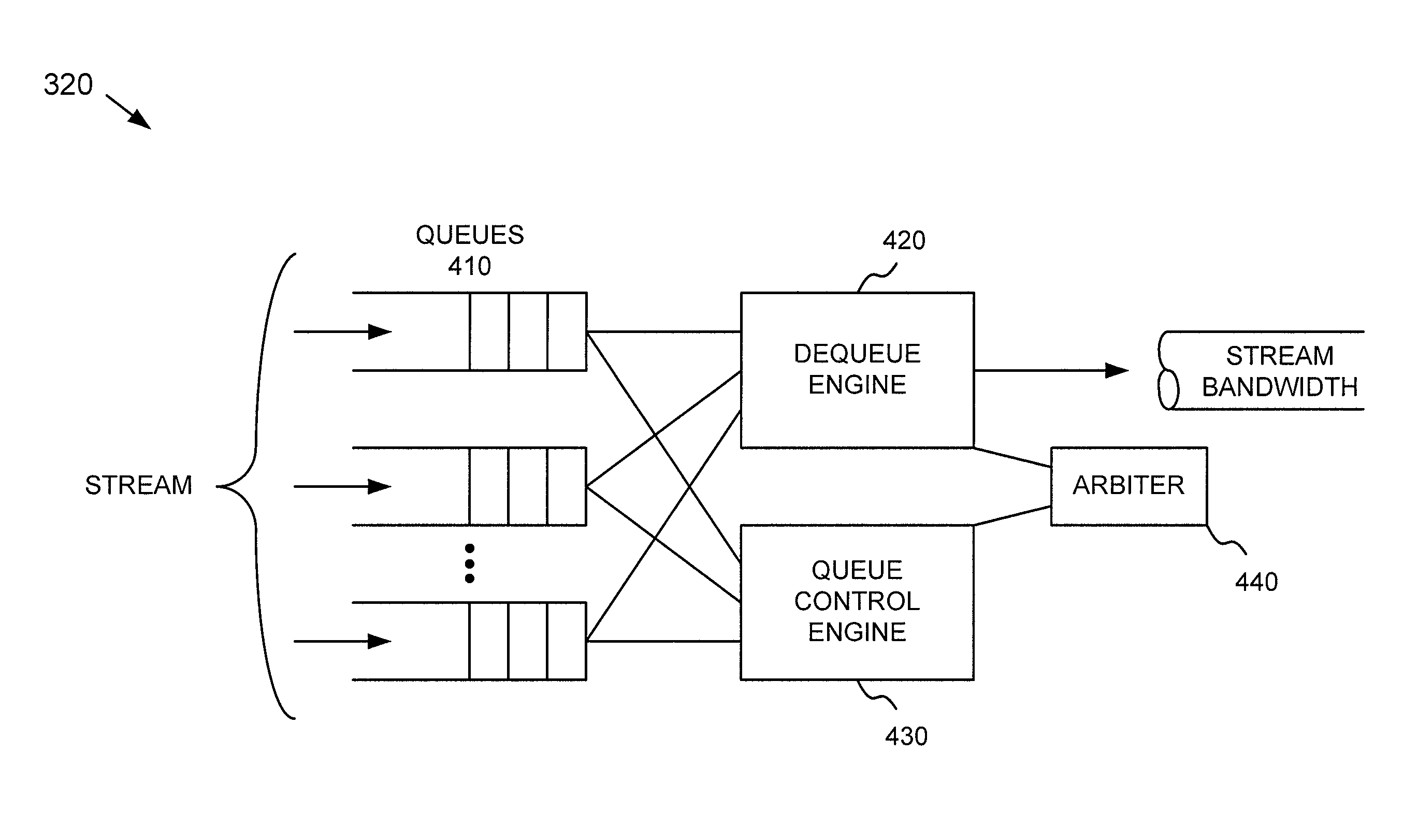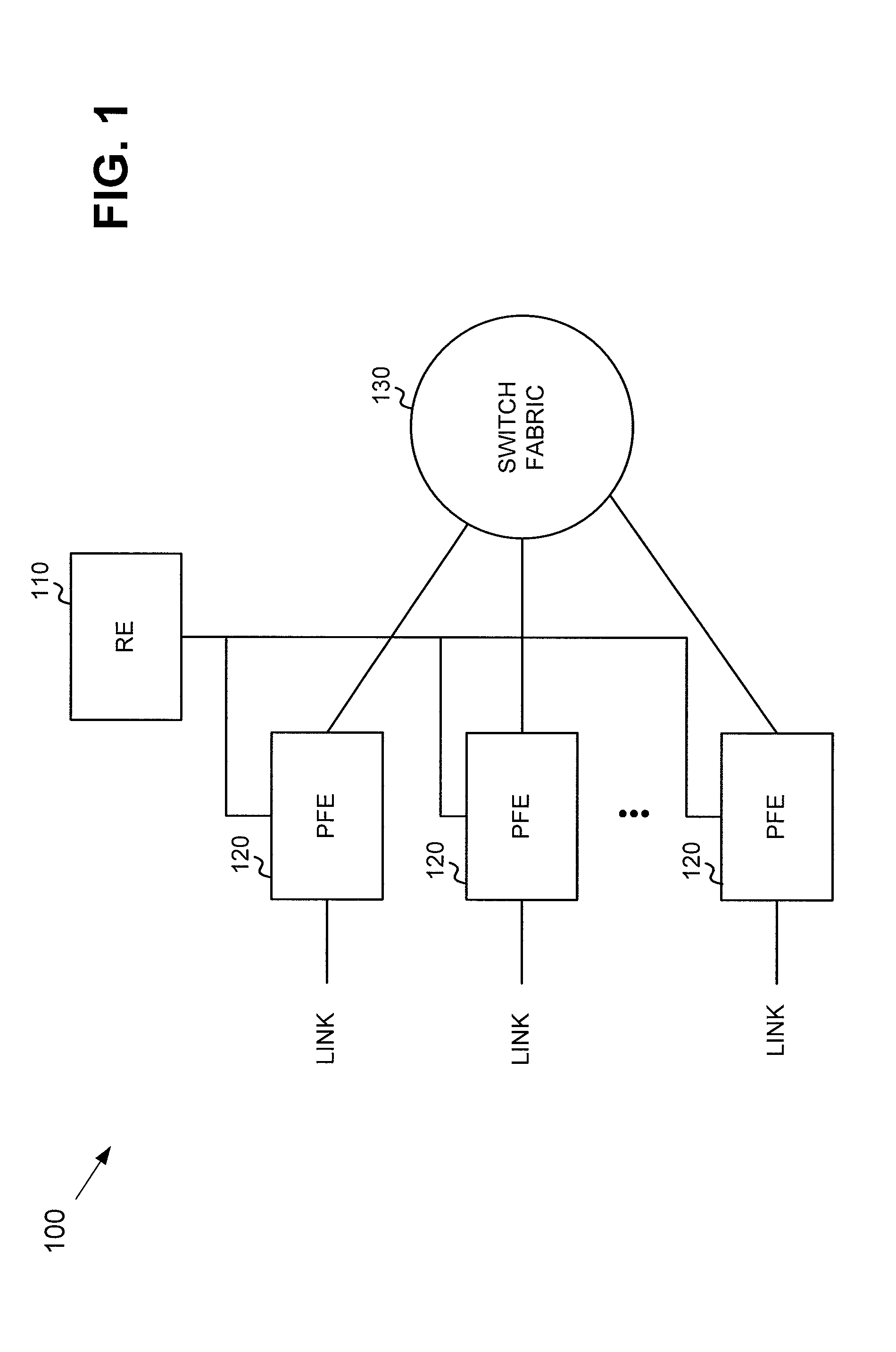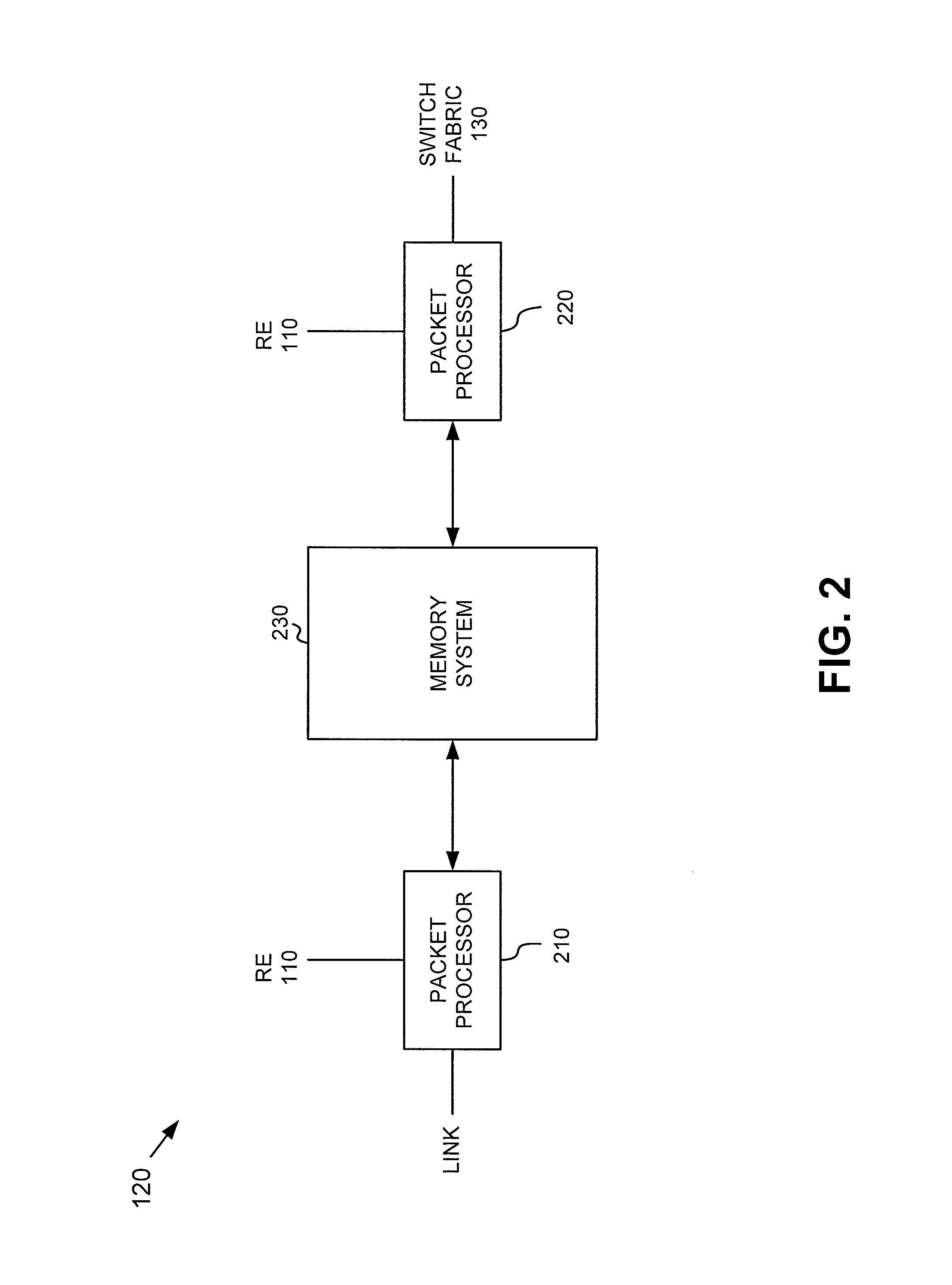Dequeuing and congestion control systems and methods
a congestion control and data transfer technology, applied in data switching networks, frequency-division multiplexes, instruments, etc., can solve problems such as difficult to determine which sources to notify of congestion, data buildup, and conventional congestion avoidance techniques replete with problems, so as to facilitate communication, facilitate communication, and process data efficiently
- Summary
- Abstract
- Description
- Claims
- Application Information
AI Technical Summary
Benefits of technology
Problems solved by technology
Method used
Image
Examples
Embodiment Construction
the invention;
[0025]FIGS. 10A-10D are exemplary diagrams that illustrate oversubscription according to an implementation consistent with the principles of the invention;
[0026]FIG. 11 is an exemplary diagram of the drop engine of FIG. 6 according to an implementation consistent with the principles of the invention;
[0027]FIG. 12 is an exemplary graph of a drop profile consistent with the principles of the invention;
[0028]FIG. 13 is an exemplary diagram of the drop decision logic of FIG. 11 according to an implementation consistent with the principles of the invention;
[0029]FIGS. 14A and 14B are flowcharts of exemplary processing by the drop engine of FIG. 11 according to an implementation consistent with the principles of the invention; and
[0030]FIG. 15 is an exemplary diagram of queue selection using HIVec and LOVec vectors according to an implementation consistent with the principles of the invention.
DETAILED DESCRIPTION
[0031]The following detailed description of the invention refer...
PUM
 Login to View More
Login to View More Abstract
Description
Claims
Application Information
 Login to View More
Login to View More - R&D
- Intellectual Property
- Life Sciences
- Materials
- Tech Scout
- Unparalleled Data Quality
- Higher Quality Content
- 60% Fewer Hallucinations
Browse by: Latest US Patents, China's latest patents, Technical Efficacy Thesaurus, Application Domain, Technology Topic, Popular Technical Reports.
© 2025 PatSnap. All rights reserved.Legal|Privacy policy|Modern Slavery Act Transparency Statement|Sitemap|About US| Contact US: help@patsnap.com



